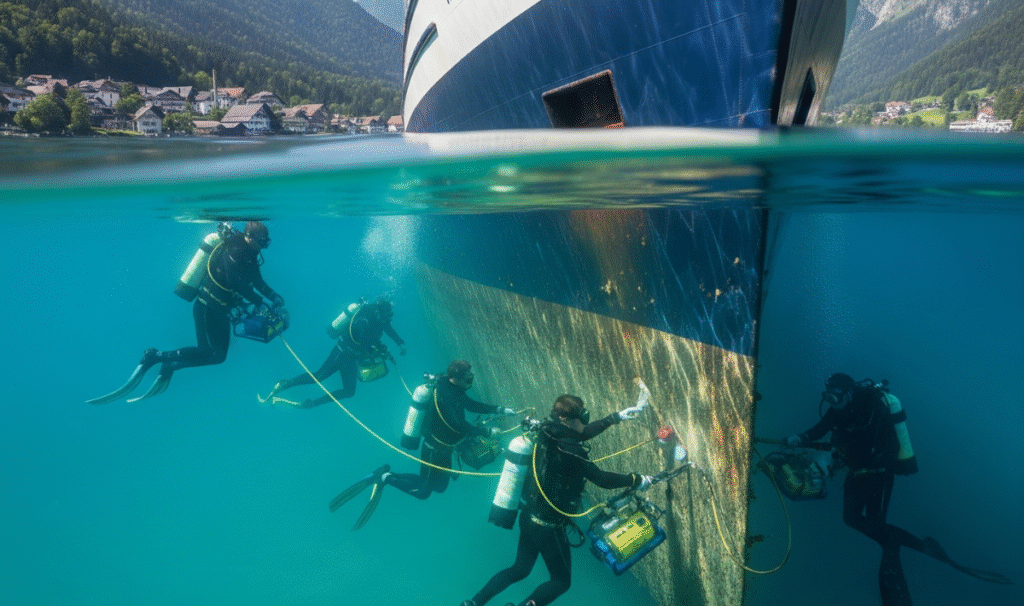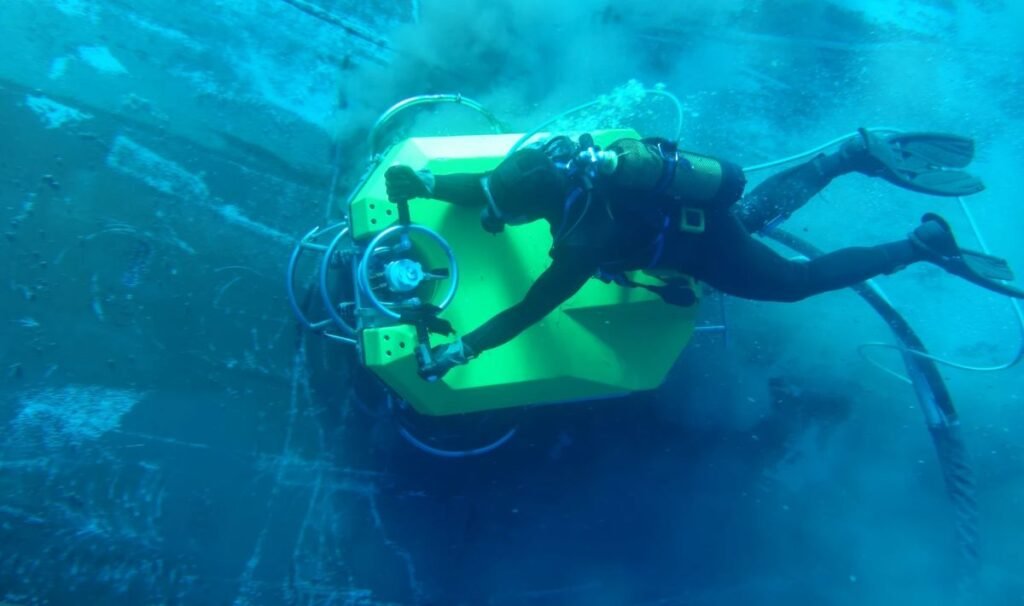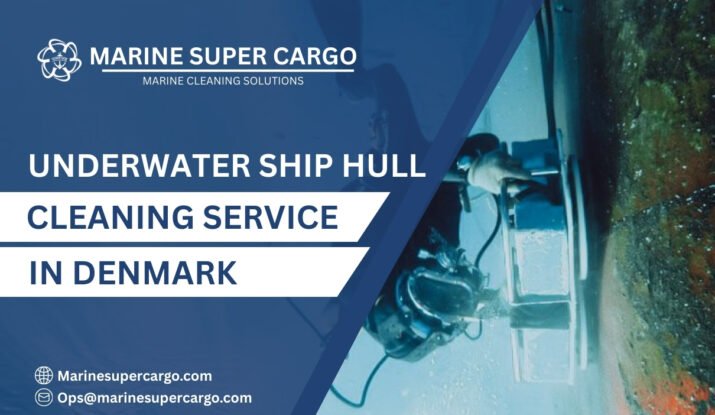Picture your ship cruising through the windswept waters linking the Baltic and North Sea, crossing between storied Danish ports. It should feel effortless—a clean, agile cut through a blue-grey canvas. But if you let barnacles, green scum, and tough marine hitchhikers cling to your hull, that smooth passage evaporates. Fuel bills soar, emissions surge, and your schedule slips like an anchor off the stern. That’s why underwater ship hull cleaning in Denmark is more than good maintenance—it’s a vital strategy for speed, eco-compliance, and profit.
Denmark sits at a maritime crossroads, with busy shipping lanes, innovative ports like Copenhagen and Aarhus, and a culture built on sustainable progress. Yet all that ship traffic, in waters blending currents from two seas, means fouling risks are constant and aggressive.
Why Underwater Ship Hull Cleaning in Denmark Matters
The Challenge of Biofouling in Danish Seas
Denmark’s cool, nutrient-rich waters create ideal conditions for barnacles, slimy biofilms, and resilient tubeworms to thrive on ship hulls. Even a thin layer of slime increases drag, reducing speed and burning more fuel—costs that multiply across hundreds of voyages. For shipowners, proactive hull maintenance following IMCA best practices not only boosts efficiency but also supports cleaner seas and stronger competitiveness in global trade.
Environmental Regulations and Compliance
Danish authorities, along with the European Union, enforce strict pollution controls and best practices for underwater ship hull cleaning in Denmark. Advanced cleaning systems must capture debris, while toxic discharge and haphazard brushing are strictly prohibited. Compliance with all local and International Marine Organization IMO environmental rules is not optional—penalties and port-entry bans await non-compliant vessels.

Common Marine Growth and Fouling in Denmark’s Ports
From Copenhagen to Kalundborg, Danish ports experience constant marine growth, including barnacles, mussels, algae, and tubeworms. The mix of salty seawater and brackish zones near port entrances creates unique fouling patterns that require adaptive cleaning solutions. For high-traffic commercial vessels, fouling can escalate rapidly, forcing cleaning cycles as often as every 4–6 months. Port authorities and global organizations like the International Association of Ports and Harbors (IAPH) support sustainable practices to ensure shipowners balance operational efficiency with marine ecosystem protection.
Modern Methods and Technologies for Underwater Ship Hull Cleaning in Denmark
Diver-Based Cleaning vs Robotic Solutions
In Denmark, diver-based cleaning with rotary brushes has been a trusted method for smaller vessels, but it carries risks such as coating damage and uncontrolled debris release. To address these concerns, ports are increasingly adopting robotic solutions and ROVs for safer, greener operations. These advanced systems align with international environmental standards like MARPOL, ensuring compliance while improving efficiency, reducing risks to divers, and minimizing ecological impact on Danish waters.
ROVs and Brushless Water Jet Cleaning
Cutting-edge Danish services now employ ROVs like the SeaBadger and HullWiper systems. These diver-free robots use high-pressure, brushless water jets to remove fouling without harming advanced anti-fouling coatings. They can clean up to 2,000m² per hour, five times the speed of divers. Critically, these systems capture all removed debris for proper onshore disposal—zero discharge into Danish harbours.
Other advances include magnetic robotic crawlers, eco-friendly gels, and even ultrasound cleaning for targeted, hull-safe fouling removal. The result? Cleaner hulls, safer seas, and nearly risk-free operations for your crew and vessel.
The Underwater Ship Hull Cleaning in Denmark Process: Step-by-Step
- Inspection and Planning: ROVs or divers survey the hull, using video and sensors to gauge fouling.
- Setup and Safety: Equipment is deployed at the berth; communication with port authorities ensures compliance and safe operations.
- Fouling Removal: Water-jet ROVs or specialized robots methodically scrub the hull, adjusting force for stubborn or delicate sections.
- Capture and Disposal: All waste is contained onboard the robot, transferred to certified facilities—never left in the sea.
- Final Survey and Reporting: The hull is reinspected, and documentation is supplied for compliance and the shipowner’s records.
How to Select a Hull Cleaning Provider in Denmark
- Look for providers with certified ROV systems and experienced operators.
- Insist on eco-friendly waste management—no discharge allowed.
- Ask for transparent reporting and full regulatory compliance.
- Value speed, safety, and minimal disruption—top providers clean during cargo operations, maximizing vessel uptime.
Benefits of Underwater Ship Hull Cleaning in Denmark
- Reduces fuel use and emissions by up to 15%—a major cost and environmental win.
- Extends coating and hull life by minimizing abrasive cleaning and paint loss.
- Ensures legal compliance with Danish, EU, and IMO regulations.
- Boosts speed and schedule reliability for cargo and passenger operations.
- Prevents invasive species transfer and protects local marine ecosystems.

Sustainable Practices and Environmental Leadership
Denmark’s maritime industry is redefining global standards by prioritizing sustainability in underwater ship hull cleaning in Denmark. Through advanced robotics, eco-friendly non-toxic cleaning agents, and closed-loop waste recovery systems, Danish companies showcase how efficiency and environmental care can work hand in hand. Hull cleaning is no longer just about maintaining smooth operations or aesthetics—it reflects a broader commitment to protecting marine ecosystems while leading the industry toward greener, smarter, and more responsible shipping practices that inspire fleets worldwide.
Conclusion:
Underwater ship hull cleaning in Denmark is your action plan for profitable, planet-friendly shipping. Let’s keep your hull free of drag, your operations sleek as a seal, and your green reputation polished. Denmark’s best-in-class providers, pioneering tech, and eco-mandates make it easy. So why lag? Step up to cleaner, smarter, and swifter sailing—your next voyage deserves the best.
FAQ:
Q1. How often should I schedule underwater ship hull cleaning in Denmark?
Most vessels benefit from cleaning every 4–6 months, depending on fouling rates and operational tempo.
Q2. Are robotic hull cleaning options available in Danish ports?
Yes! Ports like Copenhagen, Kalundborg, and Fredrika have approved ROV-based solutions.
Q3. Is in-water cleaning environmentally safe in Denmark?
When performed with certified ROVs and closed-loop debris capture, Denmark enforces zero-discharge policies.
Q4. Can I clean my hull while loading or discharging cargo?
Yes—Danish ports permit ROV cleaning during operations, saving time and avoiding costly layovers.
Q5. How is hull cleaning waste handled in Denmark?
All waste is captured and sent to certified treatment facilities—nothing is released into the sea, supporting Denmark’s environmental leadership.


